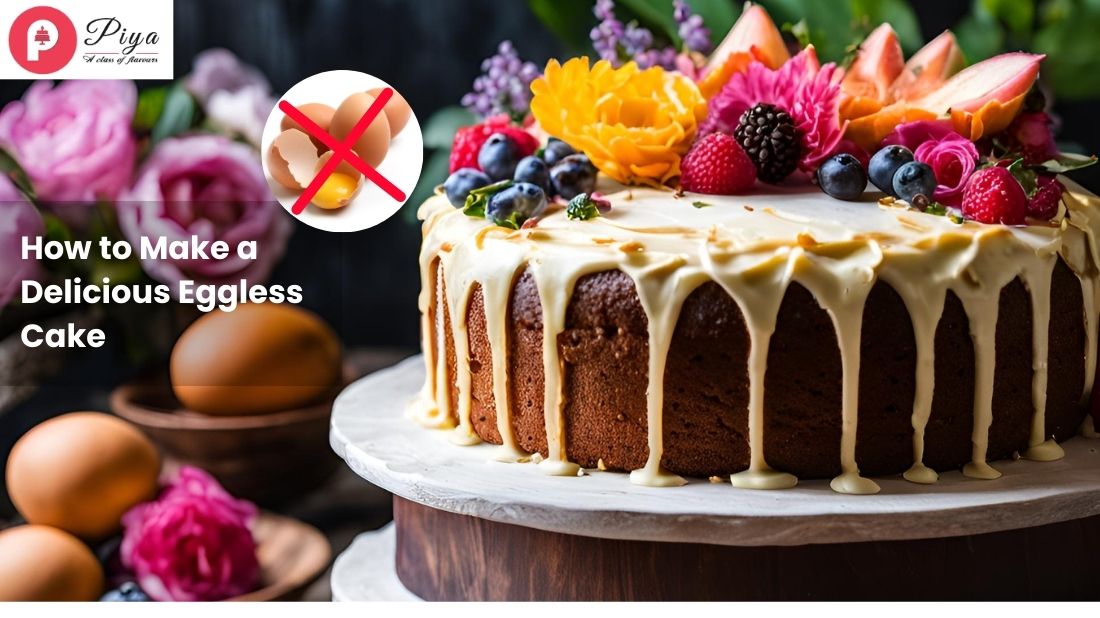This common baking myth needs debunking. Some of the best cakes don’t have eggs at all. Egg-free baking has gained popularity since nearly 2% of children have egg allergies. Many others choose egg-free options based on their dietary preferences or lifestyle choices.
Our kitchen experiments with dozens of eggless recipes led to some dense, dry disasters. The perfect eggless cake recipe emerged through persistence. Simple ingredients and proper substitutions proved more valuable than fancy techniques.
The process works well for anyone with egg allergies, vegans, or those who just ran out of eggs. Your eggless cake will turn out moist and fluffy, and people won’t believe it lacks eggs. Let’s transform your baking skills together.
Understanding Eggless Cake Science
The perfect eggless cake recipe starts with understanding eggs’ role in traditional baking. Regular cakes rely on eggs for three significant functions:
- Provide structure through protein coagulation
- Create moisture and richness through fat content
- Act as a natural leavening agent
The process of eggless cake recipes requires alternatives that match these functions. The science behind it is fascinating – eggs create a protein network that captures air bubbles, and their yolks add moisture and tenderness to the cake.
Our testing shows that yogurt and plant-based milk mixed with oil can perfectly match eggs’ moisture-giving qualities. The structure comes from ingredients that create similar protein networks mashed bananas or applesauce work great here.
The science of leavening becomes interesting in eggless baking. Eggs naturally help cakes rise, so we need the right mix of acidic ingredients and leavening agents. Many recipes achieve this by combining vinegar with baking soda. This creates a chemical reaction that releases carbon dioxide, making cakes rise beautifully.
These scientific principles are the foundations of our eggless cake recipes. Our extensive testing and experiments have helped us become skilled at making these alternatives. The result? Cakes that taste just as amazing as traditional ones with perfect texture.
Essential Ingredients & Substitutions
Let’s tuck into our eggless cake recipe and learn about the ingredients that create magic in our kitchen. We tested many combinations and these ingredients have never failed us.
The perfect egg substitute needs one of these options:
- Condensed milk (¼ cup) combined with vinegar
- Yogurt (¼ cup) for moisture and tenderness
- Mashed banana (¼ cup) for natural sweetness
- Aquafaba (3 tablespoons) for lightness
- Apple sauce (¼ cup) for moisture
Our eggless cake’s foundation depends on all-purpose flour or cake flour to achieve the best texture. Cake flour creates a lighter crumb, though all-purpose flour works great too.
The recipe’s leavening needs a mix of baking powder (1 teaspoon) and baking soda (½ teaspoon). This combination creates the perfect rise and tender crumb in our eggless cake recipe. Note that you should test these leavening agents’ freshness before use – this step is vital for success.
We found that adding a few tablespoons of yogurt or milk keeps the batter from drying out, a common issue in eggless cakes. Water, dairy milk, or plant-based alternatives work well as liquid ingredients, and each brings its unique texture to the final cake.
Mastering the Mixing Method
The mixing method is the most significant part of our eggless cake recipe now that we have our ingredients ready. This step determines whether you’ll get a light, fluffy cake or a dense, disappointing one.
Here’s our tested mixing sequence that creates the perfect eggless cake:
- Bring all ingredients to room temperature – this is non-negotiable!
- Beat the fat and sugar mixture until light and frothy
- Combine wet ingredients in one bowl, ensuring yogurt is well-beaten
- Sift dry ingredients in a separate bowl
- Gradually add the wet mixture to the dry ingredients, folding gently
The perfect eggless cake depends on your mixing technique. We’ve learned that over-mixing is your biggest enemy because it deflates the air bubbles and guides you to a dense cake. The right approach is to mix just until the ingredients combine, which creates a batter with medium to medium-thick consistency.
The batter might look too thick sometimes. A few tablespoons of room temperature milk or water can help adjust the consistency. Note that vanilla cake batter will be thicker than chocolate cake batter because of the cocoa powder difference.
We’ve found that sour curd provides excellent moisture and prevents the cake from sinking in the middle, which ensures a perfect rise. The batter should go immediately into the prepared pan since timing matters a lot with eggless recipes.
Conclusion
The science behind eggless cakes needs proper substitutes and techniques to create delicious results. Our recipe shows that egg-free baking creates cakes that are just as fluffy and moist as traditional ones.
Room temperature ingredients, precise mixing sequence, and avoiding over-mixing are significant steps. These simple steps help your eggless cake rise perfectly while maintaining its texture.
Note that eggless baking takes practice. You can start with our simple recipe and try different egg substitutes. The techniques can be adjusted based on your results. You will become skilled at creating incredible eggless cakes that everyone will enjoy, whatever their dietary needs.

